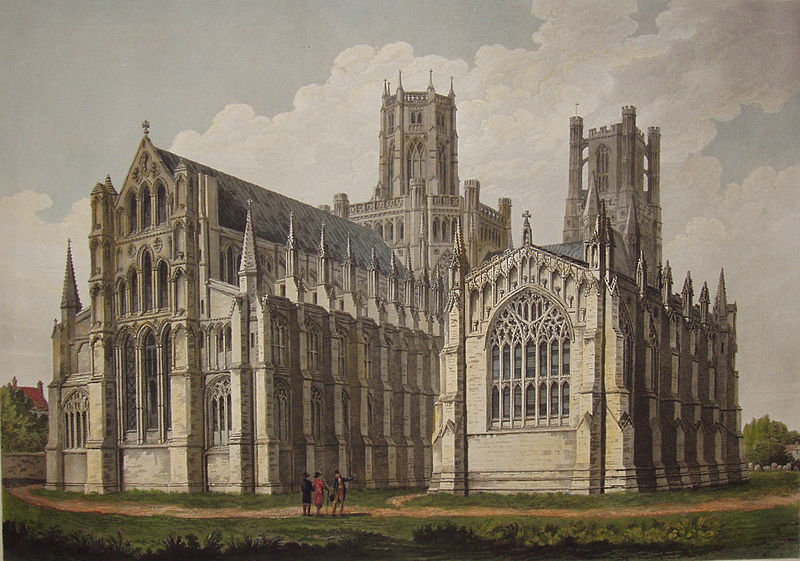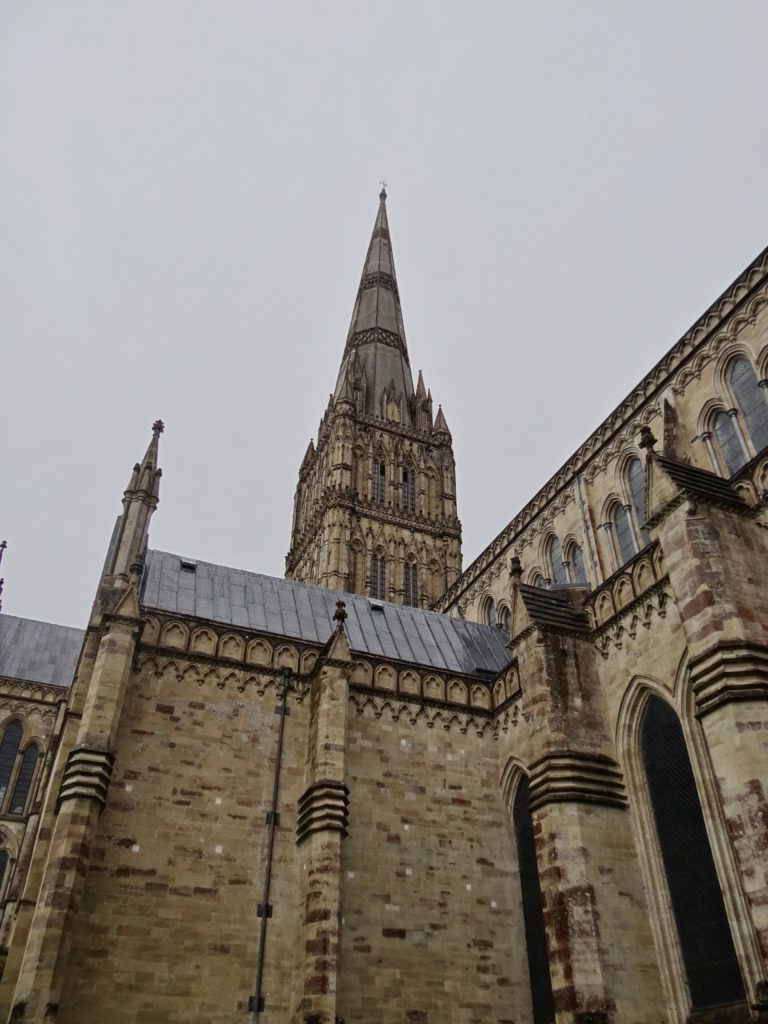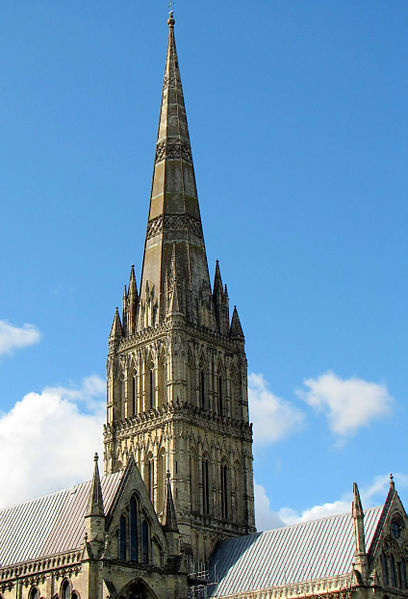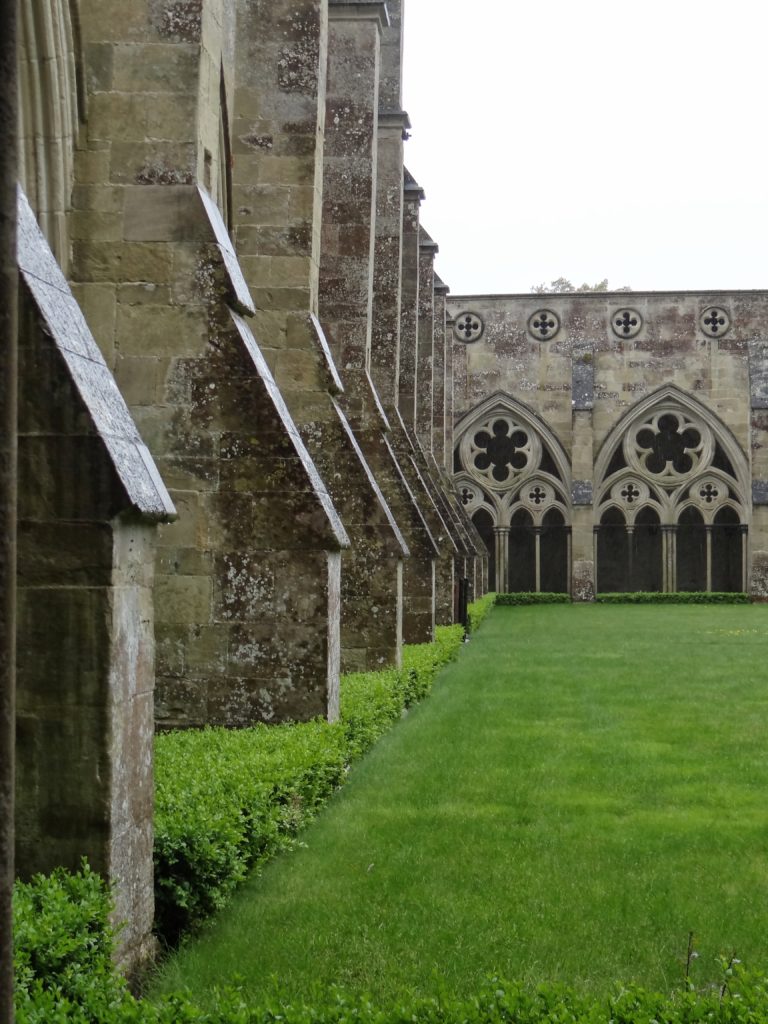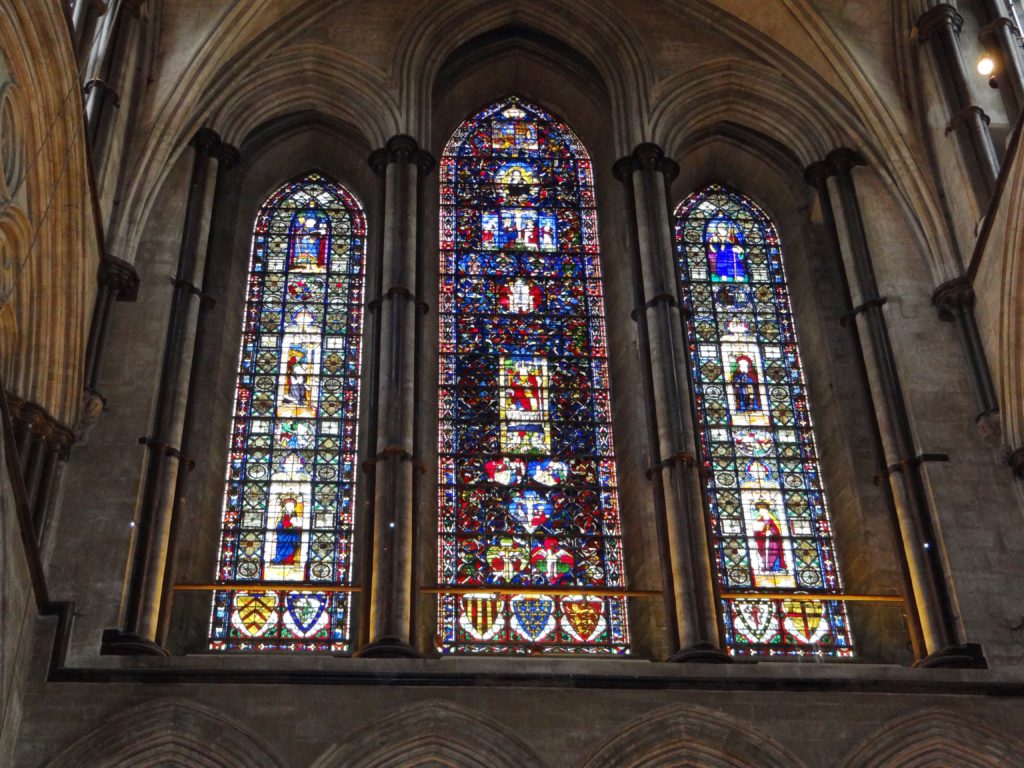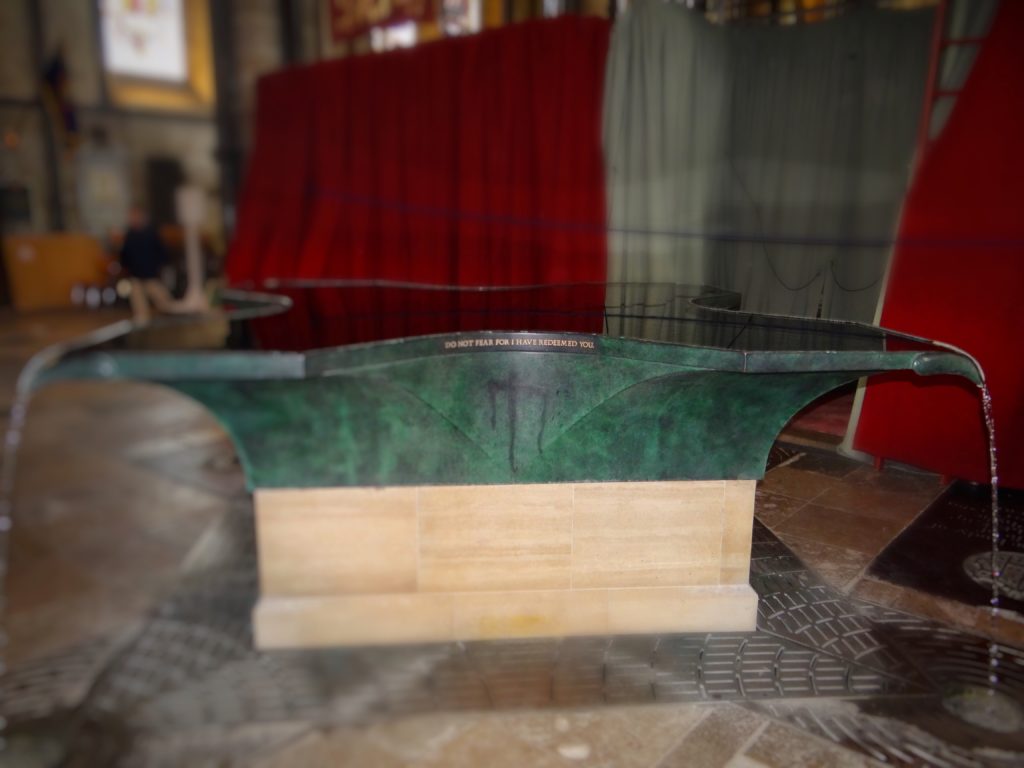
Facts About Salisbury Cathedral
Secrets Salisbury Cathedral hides behind its 13th century walls (apart from the Magna Carta)
Discover 6 Incredible Facts or Fiction about Salisbury Cathedral along with its long history
Watch This
Listen to This
What comes to your mind when I say cathedrals? For me, it’s a Gothic church with tall arches and a typical Rose window with stained glass.
All across Europe especially in England and France, there are many stunning examples of old yet original Gothic cathedrals. At first glance, they might all look similar. Look closer at the details. That’s when you’ll notice subtle differences.
Gothic architecture changes as you cross the Channel into the island. In England, Gothic can yet again be found in three stages. If you remember the history of Notre Dame (that article published a week before the fire, goosebumps) it was one of the first specimens of Gothic in France. Salisbury Cathedral (Bless it) can be its counterpart in England, a unique yet original form of Early English Gothic.
The history of Salisbury Cathedral is a long one. Before we dive into that, let’s talk about 6 strange facts about it.
I must say, it was fun compiling this list. The inspiration came from an old guidebook which contained a few facts. These facts seem to have been forgotten with time. Let’s begin
The Unknown architect
The first thing that comes to mind when you look at this marvel is its grand architecture. It makes you want to take a step back and just gawk.
The pointed gothic with its highs and lows gives the cathedral a tall look. Whoever designed it put some thought behind this design.
Imagine Salisbury cathedral without its spire. The spire was added in later. I know that’s hard to do, it would have look something like this (Ely Cathedral). You’ll notice the design still makes the cathedral look tall.
Unlike the Westminster Abbey or York Minster, the architect hasn’t focused on the Nave but on its vertical elevation. And since the cathedral is on a plain, this vertical look spotlights the cathedral from its flat surroundings.
And despite all this work, we don’t know who the architect was. All we know is Bishop Richard Poore (who wasn’t poor) commissioned a new cathedral at this spot which he probably owned. Who made the layout? We don’t really know.
The mystery of this architect, nominates Salisbury cathedral into the elite list of incredible heritage monuments with unknown architects.
Made up of Wool-packs
Since the cathedral has been around for 760 years, there are bound to be a couple of legends surrounding it.
One such legend suggests the windows, pillars and the tower of the cathedral are built on wool-packs!
The plain land on which the cathedral stands is prone to flooding. Hence, the foundations are just 4 feet deep. So where did the wool-packs come into the picture? Hard to tell.
Apparently it’s the humidity levels of this land along with the local trade that led to someone saying the cathedral is built on wool packs.
There are supposed to be hundreds of tightly wrapped wool packs on which the church stands along with its pillars, windows and tower.
Another verse adds that the woollen foundations have been laid as per the orders given by a Bishop.
‘A tradition’s still extant that points to this trade,
-The Spinster at Home in the Close of Salisbury by Miss Child
By which also a humid and soft soil’s pourtray’d,
That the Salisbury Cathedral was built on wool-packs,
And to make a foundation, some hundreds of sacks,
With wool tightly stuff’d, were convey’d day by day
By command of the Bishop its basis to lay
Its Been Struck by Lightning A Couple of Times
Records say the Salisbury Cathedral’s spire has been struck four times since the 14th century!
The first time it happened sometime in 1431. The spire caught fire. Luckily as history has shown us, it survived.
May 1560 another bout with angry lightning created a 60 feet fissure in the spire.
Again in 1641, the spire caught fire due to lightning.
A hundred years later, lightning struck through the window and into one of the upper floors of the tower. The fire kindled inside and spread to the base of the spire and the lower part of the tower. Reports suggest they contained it within two hours.
This fire in the June of 1741 ‘threatened the whole fabric with destruction’ Peter Hall said in his book, A brief history of Old and New Sarum.
A Hidden Surprise in the Spire
Did you think they’d let the lightning-magnet spire fend for itself? Of course not.
They added the only full proof solution to God’s lightning they knew, a spiritual lightning conductor.
Some restoration work in 1762 found a cavity on the southern side of the capstone on the spire. On further research they found a lead casket containing a wooden box.
Inside this wooden box was a delicately woven cloth belonging to the shroud of the Virgin.
This piece of cloth was considered a Holy Relic. It is believed to save the cathedral from a tempest or lightning.
Gleeson White further gives details of this box. He says the container was circular in shape and 5-½ inches in diameter, 2-¼ inches deep.
Picture Credits: Bernard Gagnon via Wikipedia Commons
“As many days as in one year there be”
The most surprising yet unconfirmed mystery is a latin poem written by a Daniel Rogers. This poem states that the cathedral has a very specific number of windows, pillars and gates.
The poet narrates how strange it is but true.
Salisbury cathedral has 365 windows and 8760 pillars, something I was unable to clarify.
365 you might have guessed are the number of days in a year. 8760 are the number of hours in a year.
This is no coincidence! Read what the poem says:
“As many days as in one year there be,
So many windows in this Church we see;
As many marble pillars here appear,
As there are hours throughout the fleeting year;
As many gates, as moons one year doth view :—
Strange Ule to tell, yet not more strange than true!”
Poem in Latin by Daniel Rogers
The Effigy of the Boy Bishop
The idea of a Boy Bishop was prevalent in Britain till the Tudors abolished it in the 16th century.
What is a Boy Bishop you ask…
The Bishop would appoint one of the Boys from the Choir as a stand-in Bishop.
The appointed boy would be called a Boy Bishop. The Bishop would perform a brief investiture ceremony. The Boy would get a sceptre along with robes like a real Bishop.
A Boy Bishop would act from St Nicholas Day at the beginning of December till the Day of the Holy Innocents on the 28th of December.
He could also give sermons to Royalty!
The Salisbury Cathedral has an effigy of a Boy Bishop.
It has caused some debate. People have asked whether it could be an effigy of a short bishop instead of a Boy.
Apparently if a Boy Bishop died during this brief period, he could be buried with his robes. It is only natural that the same would be depicted on his memorial. As for the records of a Boy Bishop, I don’t think we have any.
Picture Credits: Ealdgyth via Wikipedia Commons
Want to be a Boy Bishop yourself!?
Which of these 6 facts was your favourite? Have you heard about them before? Comment below so we could discuss this further
You can read about Salisbury Cathedral’s neighbour: Stonehenge
Want to read more about Salisbury Cathedral instead?
Here’s the history of Salisbury Cathedral
It’s almost a surprise that the original Salisbury Cathedral or rather a monastery was located a few miles away from the scenic landscape it stands in today.
This previous cathedral was at Old Sarum. It faced a couple of water problems along with a few quarrels with the local city officials.
In the early decades of 1200s, they decided to move their place of worship. It was very dramatic. A man shot an arrow. They built the church where the arrow landed.
Whatever their method of choosing, the new plot was an antithesis to the old one.
This plain land could easily flood and was often left soggy.
It was probably this that led to the ‘unknown’ architect digging only 4ft deep for the foundation. Mind you, there was to be no spire on the original design so it didn’t need deep foundations either.
They laid the foundation stone in 1220 and by 1258 consecrated the church.
Salisbury Cathedral was completed in 38 years. It’s this time span that makes it unique.
The architectural style is uniform across the 4 decades. There were no additions made to the original design due to delayed construction like in many other cathedrals in Europe.
Thus you’ll find a perfect uniform Early English Gothic style.
Somewhere between 1300 to 1320 the spire was built. One source says it was a local man who designed the spire. It fits in perfectly with the rest. The spire was beautifully designed but poorly executed.
Within just a few decades, repairs were needed. There was apparently a slight tilt.
The scaffolding used during the repairs was never removed. It holds the tower in place.
The spire is 404ft tall and since the 16th century holds the record of being the tallest in England and also the longest lived.
I reckon, for them to build this spire, they’d have to make a few changes to the main structure as well. There is record of construction in the 14th century. They added in ‘strainer’ arches and buttresses along with iron ties. This made the cathedral’s structure stronger.
The next biggest change came with the notorious Tudors. Not only did they stop the practice of the Boy Bishop but their most famous King Henry VIII also established a separate Church of England.
Since the papal practises were now made illegal, many changes were made to the ethos as well as the fabric of Salisbury Cathedral. Relics belonging to saints were destroyed, the chantries were abolished and sermons were preached in English instead of Latin. The list of reforms was long.
The 1600s wasn’t any less uncertain. A military skirmish damaged the tower, lead was stolen from the cathedral, the cloisters were used to house Dutch prisoners who escaped (what!!) and the Bishop, Dean and Chapter was abolished along with living quarters. Even the original glazing of the upper windows was lost to history. It has never been restored.
After all that upheaval, a survey was carried out with the revered Sir Christopher Wren. He inspected the spire.
The Clerk of Works, Francis Price from 1737 to 1753 restored the damaged roof and also published a detailed account of the Cathedral for the first time.
We can say it was pure luck that Price wrote his book. It was only a matter of a few years that it would have all been destroyed by one idiot man history dubbed ‘The Destroyer.’
James Wyatt received a letter of consent to revamp this historic cathedral.
Apparently his idea of a revamp was white washing the walls which covered up the bright yet old medieval paintings, destroying some furniture along with some old chanceries, replacing the old stained glass with plain glass, moving monuments. You know that kind of destructive actions.
You can see why most people did not appreciate this. Would you tolerate an architect hammering your historic local chapel?
In the 1850s they began reversing Wyatt’s stupidity.
A decade later they asked the acclaimed George Gilbert Scott to help them out.
Scott carried out a thorough restoration.
Soon the medieval colours accentuated the cathedral once again and the medieval stained glass lit it up with more vibrant hues.
The choir was given a medieval look and now as you glance upon Salisbury Cathedral’s interiors it fools you into believing that it is indeed an untouched medieval masterpiece.
Since then no other architect has majorly carried out any revamps save for a continuous restoration project introduced after the World Wars.
The only part of the cathedral that is very much eye catching and new is its incredibly stunning Baptismal Font. The water looks so still reflecting the incredible Gothic vaulting above.
When we visited, Salisbury Cathedral was drenched in the rainy British weather. Despite the gloom, it looked stunning with its history.
Visit Salisbury Cathedral to explore the best copy of Magna Carta it houses in its Chapter House. This 800 year old document is older than the cathedral but it’s an original.
Amongst the few original drafts that King John’s assistant signed for him, this one was given to the monastery at Old Sarum. I assume it was then brought to Salisbury Cathedral.
That’s history at its best.
Thank You for patiently reading up to here. If you liked this article, share it with your friend…
New to GiGlee? Sign Up for weekly updates now and get a gift in your inbox:
Comment below if you’ve been or haven’t to Salisbury Cathedral!
Have a great week ahead.
Read About: Magna Carta
Heritage Sites near Salisbury Cathedral
The Ancient Stones of Stonehenge
Bibliography
Salisbury Cathedral: Official Website
The Spinster at Home in the Close of Salisbury: Miss Child
Handbook of Salisbury Cathedral
A Brief History of Old and New Sarum: Peter Hall
Bell’s Cathedrals: The Cathedral Church of Salisbury: Gleeson White
The Tree-Ring Dating of the Tower and Spire at Salisbury Cathedral, Wiltshire: D W H Miles, R E Howard and W G Simpson





